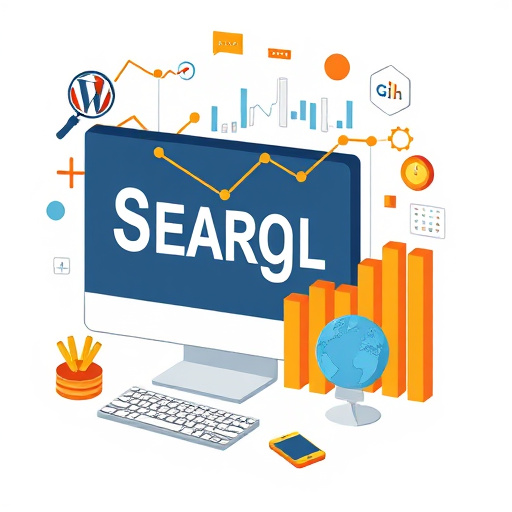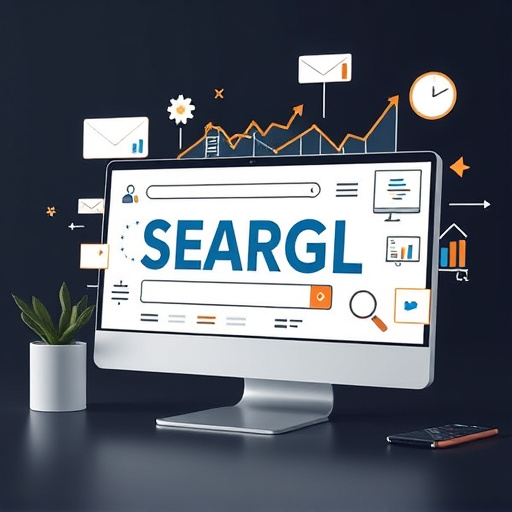Auditing corporate website design focuses on usability, user experience, and performance metrics. Key indicators include load times, mobile responsiveness, and intuitive navigation. Optimizing these enhances user satisfaction, reduces bounce rates, and boosts search rankings. Effective design incorporates clear call-to-actions, readable fonts, and well-spaced layouts. SEO best practices, like meta tag optimization, further improve organic visibility. High-quality content, strategic keyword integration, and regular updates drive engagement and Google search rankings in a robust corporate website design.
Audit your company’s online presence with a comprehensive evaluation of its corporate website design. This guide outlines a strategic approach to ensure peak performance. By assessing usability, user experience, technical metrics, and content strategy, you can optimize your site for both users and search engines. Identify areas for improvement, enhance conversion rates, and elevate your brand in the digital landscape through this step-by-step process focusing on corporate website design.
- Assess Usability and User Experience
- Evaluate Technical Performance Metrics
- Analyze Content Quality and Strategy
Assess Usability and User Experience

When auditing a corporate website design for performance, assessing usability and user experience is paramount. It’s not just about aesthetics; it’s about how easily visitors can navigate, interact, and achieve their goals on your site. Key metrics include load times, mobile responsiveness, and intuitive information architecture. Ensure the site loads swiftly, adapts seamlessly to different screen sizes, and organizes content in a logical manner. This not only enhances user satisfaction but also significantly impacts key performance indicators like bounce rates and time spent on page.
Focus on clear call-to-actions (CTAs), easy-to-read fonts, and well-spaced layouts. These elements play a crucial role in improving Google search rankings and local search optimization through enhanced user engagement and reduced friction. Moreover, consider incorporating SEO marketing services best practices into your corporate website design. This includes optimizing meta tags, URLs, and content for relevant keywords to bolster organic visibility. Ultimately, a well-designed, user-friendly corporate site not only attracts but also retains visitors, paving the way for better conversions and business growth.
Evaluate Technical Performance Metrics

Evaluating technical performance metrics is a crucial step in auditing any corporate website design for optimal functionality and user experience. Key metrics to assess include website speed, load times, and page rendering efficiency. A fast-loading website significantly enhances user engagement; thus, tools like Google PageSpeed Insights can help identify areas for improvement in website speed optimization. These insights often reveal opportunities to compress assets, minimize HTTP requests, or leverage browser caching.
Additionally, optimizing for local SEO Fort Lauderdale is essential for any corporate website aiming to attract nearby customers. Ensuring that the site is properly indexed by search engines and includes location-specific content enhances visibility in regional searches. Google Business Profile optimization plays a significant role here; ensuring the business’s profile on this platform is complete and accurately reflects services and operating hours can significantly boost local search rankings.
Analyze Content Quality and Strategy

When auditing a corporate website design for performance, one of the critical aspects to examine is the content quality and strategy. The content on a corporate website serves as more than just words; it’s a reflection of the company’s brand, mission, and value proposition. High-quality content that is well-written, informative, and relevant to the target audience can significantly improve user experience and engagement. It also plays a pivotal role in search engine optimization (SEO) by attracting organic traffic and helping to improve Google search rankings.
A robust content strategy ensures consistency and relevance across all pages of the corporate website design. This includes optimizing page titles, meta descriptions, header tags, and images for both users and search engines. By integrating keywords strategically without compromising readability, companies can enhance their visibility and attract a larger audience. Additionally, regular updates and fresh content can keep visitors engaged and encourage longer browsing sessions, which are all factors that contribute to a successful and high-performing corporate website.
Auditing a corporate website design involves a multi-faceted approach. By assessing usability, evaluating technical performance metrics, and analyzing content quality and strategy, businesses can ensure their online presence is not only visually appealing but also highly functional and effective. Incorporating these insights allows for continuous improvement, ultimately enhancing user experience and boosting the overall success of the corporate website design.














